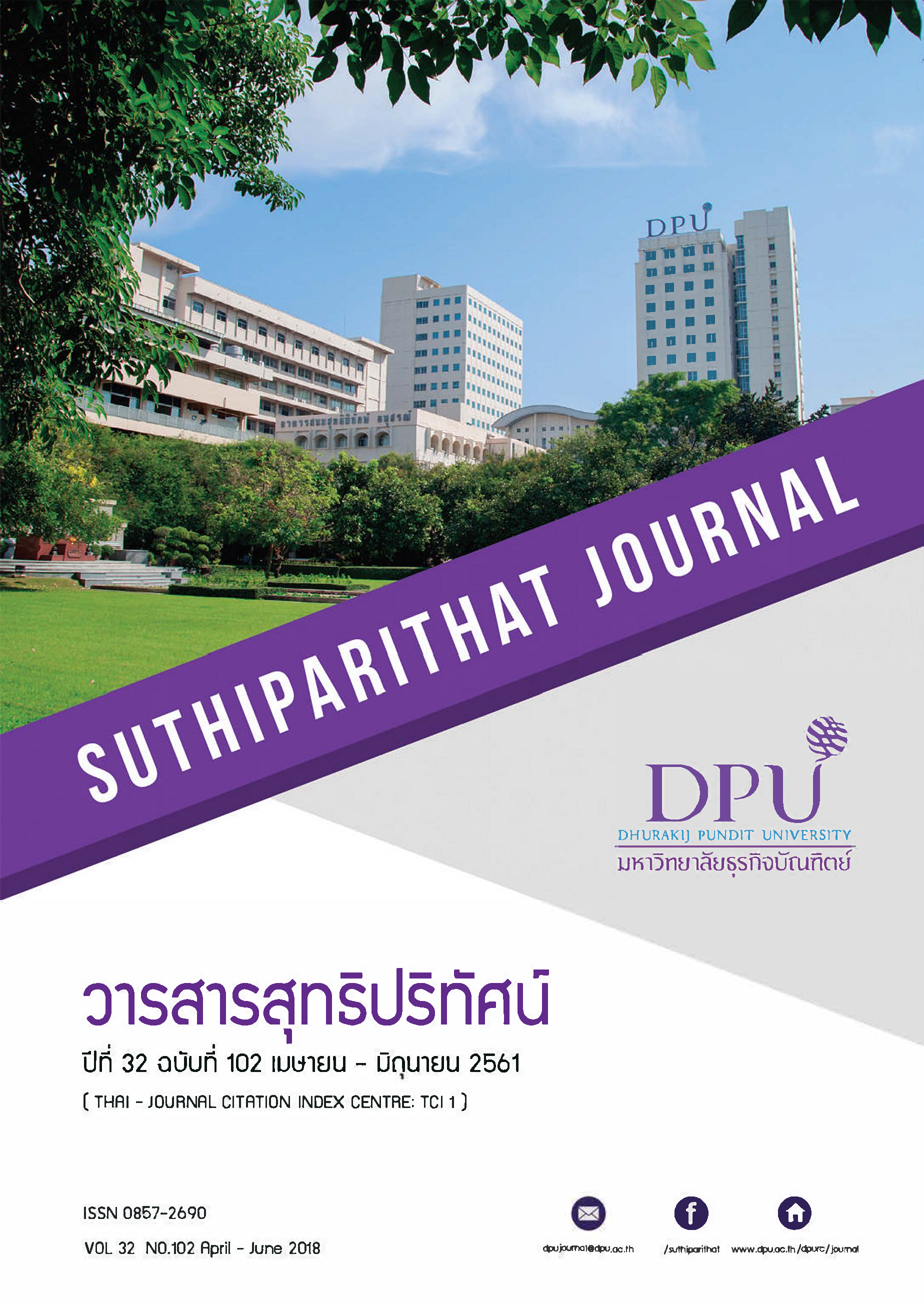A COMPARATIVE STUDY OF PRODUCTION EFFICIENCY BETWEEN LAND OWNERS AND TENANTS IN AGRICULTURAL PRODUCTION IN THAILAND: THE CASE STUDY OF SUPHANBURI, KANCHANABURI, NAKHON SAWAN, AND NAKHON RATCHASIMA PROVINCE
Keywords:
Tenancy, Owner, EfficiencyAbstract
The objective of this study is to compare the effects of the status of land tenancy and land owner on production efficiencyin terms of yields and investment expenditure in four provinces namely Suphanburi, Kanchanaburi, Nakhon Sawan, and Nakhon Ratchasima. The results of the ANOVA analysis revealed that there is no clear pattern that would allow us to conclude that the behavior of tenants conforms to a priori expectations on investments and performance measured in terms of yields. In this study, we also used Propensity Score Matching (PSM) to analyze the differences between land owners and tenants. The main findings were that (1) landowners are generally those who have been living and farming in the area longer than the tenants; (2) output prices received by tend to be lower than land owners tenants were lower; (3) tenants are also more heavily in debt than landowners; and (4) most of the tenants in the study areas were not aware of the existence of the Tambon Committee on Tenancy Farming.
References
ฉัตร ช่ำชอง. (2522). หลักการจัดการฟาร์ม. กรุงเทพฯ: โรงพิมพ์ชาญการพิมพ์ 90-94.
ทองโรจน์ อ่อนจันทร์. (2521). การปฏิรูปที่ดินเพื่อพัฒนาการเศรษฐกิจของประเทศไทย: ปัญหาและนโยบาย. สืบค้น 15 สิงหาคม 2558, จาก http://ag-ebook.lib.ku.ac.th/ebooks/2014/20140220/files/assets/basic-html/index.html#page1.
วิษณุ อรรถวานิช. (2558). การประเมินผลกระทบของโครงการรับจำนำข้าวที่มีต่อสถานะทางเศรษฐกิจของเกษตรกรไทย. กรุงเทพ: สำนักงานกองทุนสนับสนุนการวิจัย (สกว.).
ศิริพร สัจจานันท์ และคณะ. (2559). โครงการศึกษาสภาพการเช่าที่ดินเพื่อเกษตรกรรมในประเทศไทย. กรุงเทพฯ: สำนักงานกองทุนสนับสนุนการวิจัย
สำนักงานเศรษฐกิจการเกษตร. (2559). สถิติการเกษตรของประเทศไทย ปี พ.ศ. 2557. กรุงเทพฯ: สำนักงานเศรษฐกิจการเกษตร.
Abadie, A. and Imbens, G. (2006). Large sample properties of matching estimators for average treatment effects. Econometrica, 74(1). 235-267.
Chuang, S. (1969). The Theory of Share Tenancy. University of Chicago Press.
Currie, J. M. (1981). The Economic Theory of Agricultural Land Tenure. Cambridge University Press.
Deininger, K. (2003). Land Policies for Growth and Poverty Reduction. A World Bank Policy Research Report. สืบคืน 1 พฤศจิกายน 2558, จาก http://documents.worldbank.org/curated/en/485171468309336484/310436360_20050007001644/additional/multi0page.pdf.
Food and Agriculture Organization. (2004). Leasing Agricultural Land. สืบค้น 1 พฤศจิกายน 2558, จาก http://www.fao.org/3/a-y5513e.pdf.
Ghosh, J. 1988. The Determination of land rent in a non-capitalist agriculture: North India, 1860-1930. Modern Asian Studies, 22.(2), 355-382.
Krishna, K. Ashok, M. and Samarendu, M. (2016). Impact of Land ownership on productivity and efficiency of rice farmers: the case of the Philippines. Journal of Land Use Policy. Vol 50. pp.371-378.
Ming-Hsuan, Lee. (2011). Land ownership and productivity in early twentieth century China: the role of incentives. International Journal of Development Issues. Vol 10, Issue 2. pp.141-153.
Quan, J. (2005). Land Access in the 21st Century: Issues, Trends, Linkage and Policy Options. Paper Prepared for Land Tenure Service, Rural Development Division-FAO.
Rosenbaum, P. R. and Rubin, D. B. (1983). The central role of the propensity score in observational studies for causal effects. Biometrika 70(1), pp.41–55.
Downloads
Published
How to Cite
Issue
Section
License
Content and information of the article published at Suthiparithat Journal are based on the sole opinions and responsibility of author(s) only. Neither the editorial board involve in......






